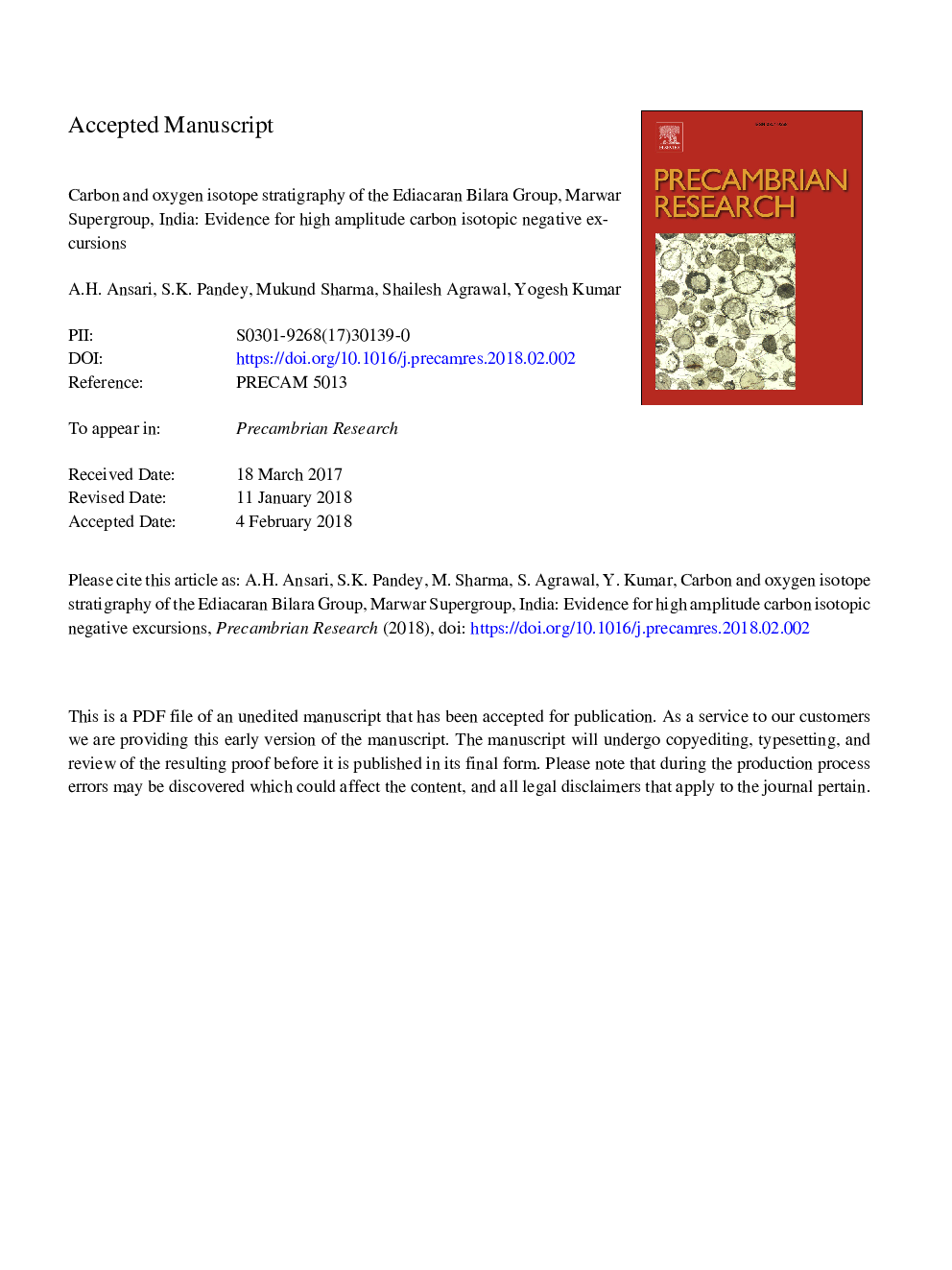| Article ID | Journal | Published Year | Pages | File Type |
|---|---|---|---|---|
| 8912617 | Precambrian Research | 2018 | 64 Pages |
Abstract
Results of a robust high-resolution carbon and oxygen stable isotope studies conducted on the Ediacaran Bilara carbonate sequence of the Marwar Supergroup, Rajasthan, India are presented. The δ13C-carb and δ18O-carb in the Bilara Group vary from â9.0 to 4.1â° and from â10.7 to 8.3â° respectively. Overall, 457 analyzed samples have δ18O-carb significantly above â10â°, below which carbonates are considered diagenetically altered. The results are compared with well-dated established high amplitude negative carbon isotope excursions sites in other parts of the world recorded from the Ediacaran successions. The Bilara δ13C-carb pattern is closely similar to that of the Yangtze Gorges platform, South China, where the Ediacaran δ13C-carb variation profile revealed four negatives (EN1, EN2, EN3, EN4) and three positive excursions (EP1, EP2, EP3). Similarities of δ13C-carb pattern demonstrate that carbonate succession of the Bilara Group is likely time equivalent to Yangtze Gorges succession.
Related Topics
Physical Sciences and Engineering
Earth and Planetary Sciences
Geochemistry and Petrology
Authors
A.H. Ansari, S.K. Pandey, Mukund Sharma, Shailesh Agrawal, Yogesh Kumar,
